Nasal reshaping is the most common type of service provided by plastic surgeons. Many people always consider even a small defect in the nose as a tragedy. But it can be difficult to decide on an operation - rhinoplasty. Modern aesthetic medicine offers an innovative way to overcome defects. In the presence of small defects, non-surgical rhinoplasty improves the appearance and can make the face symmetrical.
Types of rhinoplasty
In plastic surgery, it is common to distinguish several types of rhinoplasty according to the technique and purpose of the operation.
All types of operations are divided into primary and secondary (repeated), although they can be:
- Reconstructive. This group includes abnormal intrauterine development or manipulations aimed at restoring anatomical abnormalities resulting from traumatic injuries or diseases.
- Aesthetics. Aims to correct shortcomings.
There are many types of rhinoplasty, depending on which problem is solved:
- It is reduced. Provides a reduction in the size of the nasal osteochondral frame. This can be a shortening of the tip, narrowing of the bridge of the nose, the width of the nostrils and lateral cartilage.
- Expansion. Aims to correct defects by increasing the size of the nasal skeleton. It is also used in secondary plastics.
- Septorinoplasty. Eliminate the curvature of the nasal septum to facilitate nasal breathing, including resolving the problem of snoring.
- Vaccination. The required shape of the nose arises from the patient's cartilage tissue. The eardrum and cartilaginous tissue of the nasal septum can be removed for transplantation.
- Reconstructive rhinoplasty. Aims to correct the results of previous operations.

The purpose of the intervention may also be hypertrophic nasal mucosa, columella (bridge between the nostrils). Changing the shape of the tip of the nose (hook or lifting upwards) is a separate and most difficult type of operation.
For any correction, the surgeon may choose a surgical or non-surgical type of intervention.
Operating room
It is performed under general anesthesia. The operation can take up to several hours and the result is stored for many years. Prior to surgery, the patient must sign a written consent for surgery, so carefully weigh the pros and cons and strictly follow the rules of preparation before surgery:
- delivery of blood tests, fluorography, electrocardiogram;
- consultation of other specialists (dermatologist, therapist, psychiatrist);
- to follow a diet.

After the operation, the patient is hospitalized for several days under the supervision of medical staff. After the release, you must also strictly follow some rules and restrictions.
Like any surgery, nasal reconstruction surgery has a number of contraindications and can cause side effects and complications.
Non-surgical
Alternatively, plastic is used without surgery. Contour plastic is minimally invasive and does not involve surgery. It allows you to correct the asymmetry, slightly reduce the tip, remove the hill, straighten the nose, but it is not suitable for solving complex problems (restore respiratory function, eliminate congenital defects).
It differs from classical rhinoplasty:
- lack of a complex operation and long-term rehabilitation;
- execution speed;
- short duration of exposure (not more than one year);
- as the result is lost, the probability of re-implementation is lost.
This can be an injection-free correction using fillers, injection plastics, hyaluronic acid-based gels, hormonal breakdown drugs, or sutures or ateliers.
Contour rhinoplasty at a cost is several thousand rubles cheaper than traditional.
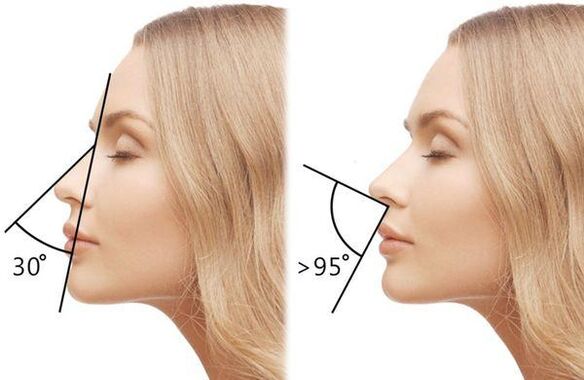
Classifications of surgical rhinoplasty
Primary complete rhinoplasty does not cover the entire nose. This is the most popular type of operation. Conditionally, the instructions for operation are divided into 2 types according to the following:
Cosmetic plastic. If you want to get rid of the following nasal defects:
- posterior bulges (hips);
- excessive length;
- thickened nose (potatoes);
- back saddle;
- large holes.
Functional plastic. The purpose is to eliminate the defects that cause poor breathing, to prevent air from passing through the nose:
- an injured septum with curvature;
- Narrowing of the nostrils (birth defect)
- congenital defects of cartilage tissue.
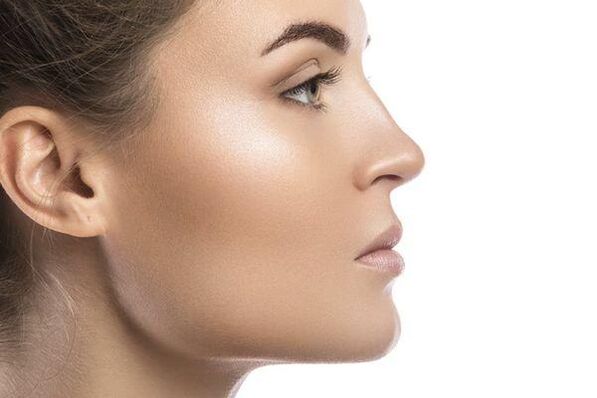
Open
The technique is used when it is not possible to achieve a closed task. The incision is made along the columella (the part of the skin between the nostrils) and on the nostrils where they are attached to the lip. Open rhinoplasty allows the soft tissues and cartilage to be lifted up, giving access to the internal parts for manipulation. Required for technically complex and large-scale operations:
- severe deformation of the nose with lateral displacement;
- combination of nasal deformity with malformation ("cleft lip" or cleft palate cleft);
- reconstruction where vaccines are used.
Disadvantages of this intervention include damage to the columella vessels, postoperative wound formation, and prolonged postoperative tissue edema.
Re-rhinoplasty is performed only openly. Correcting primary plastic imperfections is a difficult task, so an uncompromising aesthetic result is not always guaranteed.

Closed
The method is obviously less traumatic. The incision is made from the inside, in the mucous membrane of the nasal vestibule. Such access is provided when a small-scale operation is to be performed. This type of intervention is divided into marginal (along the inner surfaces of the nasal wings), transseptal, inter- and transchondral. The closed access option is endoscopic rhinoplasty using microstructures.
It allows to exclude damage to arteries and tissue nutrition, no postoperative scars are visible, because they remain ineffective outside the skin because they are located in the nasal cavity. The method is often used for aesthetic operations.
laser
An operation that uses a laser instead of a scalpel to cut tissue. The laser incision is softer because the parallel cauterization of the vessels excludes the development of bleeding.
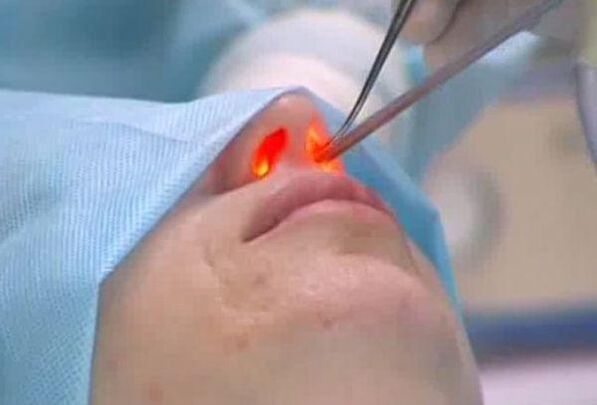
There are 2 types of laser rhinoplasty:
- open, covering the fragmentation of tissues before modeling the soft part or cartilaginous base;
- surface - evaporation of surface layers to correct small changes in nasal tissues, not skin incisions.
Injection reconstructive rhinoplasty
Sometimes those who decide to have rhinoplasty want not only to predict and develop a model, but also to see the end result. Contour injection nasal plastic surgery procedure can help here. The result is faster, more convenient and cheaper.
Medications can be injected repeatedly. In some cases, fibrous tissue forms at the injection site and the nose may take shape for a long time.
Hyaluronic acid injections
The effect of hyaluronic acid injections lasts about six months. The application of the drug allows you to smooth the surface of the skin and make the nose symmetrical, filling small irregularities. Hyaluronic acid-based fillers are used in cosmetic surgery. These funds are biodegradable, ie classified as soluble. Over time, the drug breaks down into safe components - water and carbon dioxide.
Plastic nasal fillers
There are several filler groups. Biodegradable, in addition to the above, includes:
- based on animal collagen;
- about collagen of human origin;
- in calcium hydroxyapatite;
- on synthetic lactic acid.
These fillers can have long-term effects.
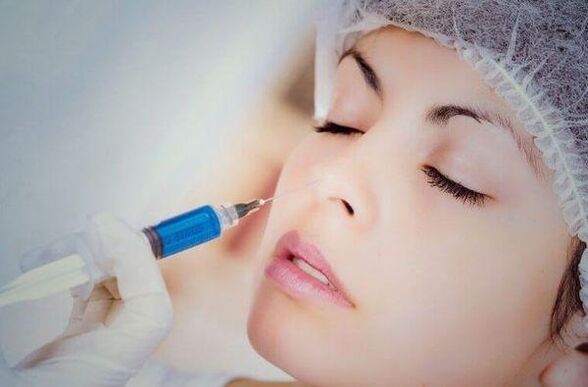
Biodegradable (non-absorbent or durable) fillers are made on the basis of silicone or other synthetic bases (biopolymers). The effect after application lasts a long time, but experts do not recommend their use. There are several reasons to give up synthetic fillers:
- can cause tissue fibrosis;
- they cannot be removed from the body;
- may be a barrier to future surgical rhinoplasty.
Hormonal drugs
Glucocorticosteroids are used to correct some defects in the nose - synthetic substances similar to hormones produced by the human adrenal cortex. They can soften and partially dissolve the cartilage tissue, which allows you to correct the shape of the wings and the tip of the nose, to correct the humerus.
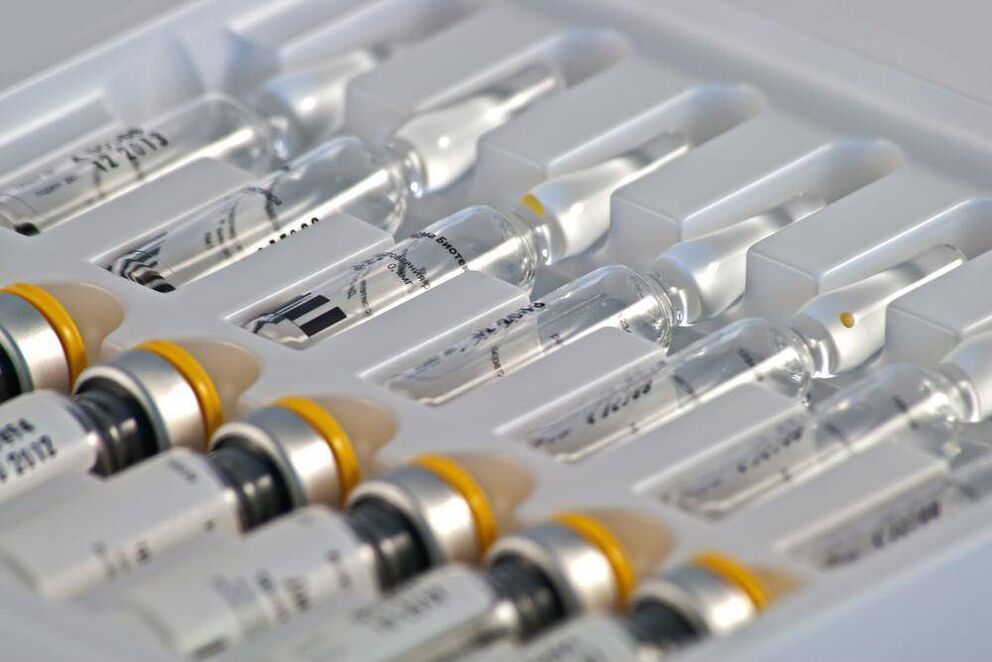
The procedure is relatively simple, but difficult to prepare: the dose and depth of application of the drug must be calculated very accurately to avoid asymmetry and unnecessary gaps in the nose. In addition, excess hormones can cause uncontrolled tissue atrophy.
Often such an adjustment is made in the course of several procedures.
Lipolytics
Lipolytics are substances used for mesoinjections. It is a biologically active material that promotes the burning of subcutaneous fat. Dermaheal is used to correct the shape of the nose. Helps eliminate wrinkles and creases, will get rid of the "fleshy" nose. Contains active ingredients: phosphatidylcholine, hyaluronic acid, carotene, etc.
Non-injection rhinoplasty
Less often nasal correction is done without injections. Experts consider such procedures quite effective.
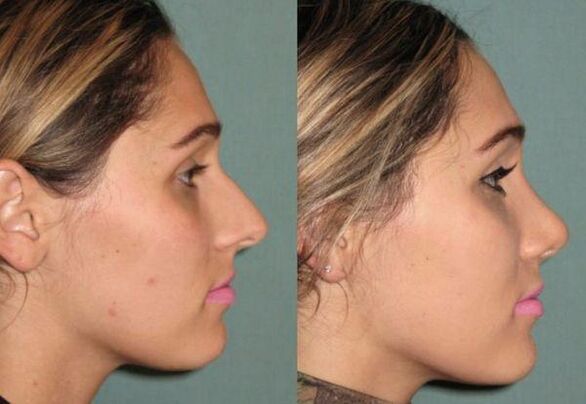
With a tongue with clips
Use the atel to align the back and tip of the nose - a device made of plastic or plaster. The design creates constant pressure on the cartilage and soft tissues and changes their position over time. With the help of the workshop you can raise the tip, narrow the wings, reduce the length (by lifting the tip), straighten the hump and restore symmetry.
Nowadays, easily removable structures in the form of clips or clips are spreading. They need to wear it every day for several months.
Topics
To correct the asymmetry, straighten the back, straighten the wings and the tip of the nose, filament rhinoplasty is used. The correction technology involves the insertion of strong self-pulling threads under the skin. Unlike fillers, the nose does not grow visually after the threads are inserted. The result lasts for 3 years.
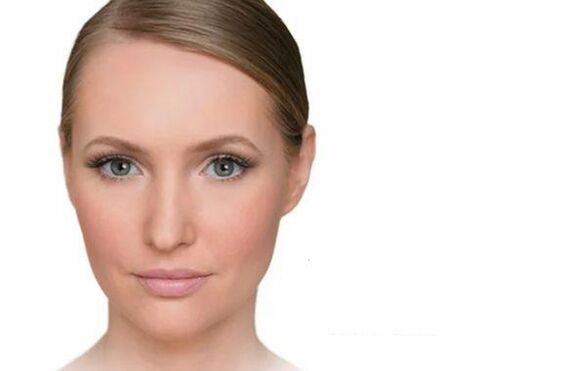
Bion filaments are made of caprolac and straighten the tissues of the nasal region through multiple grooves. The threads are inserted through small holes, then the cosmetologist squeezes them and gives the desired shape to the nose. The result will be known in 2-3 days. Other benefits of using themes:
- low invasiveness;
- painlessness;
- use of local anesthesia;
- there are no complications;
- no swelling and bruising.
Disadvantages of this correction method:
- scars may appear at the puncture sites;
- ropes can be contours, ie will be visible.
The procedure is contraindicated for people with thin light skin and keloid scars.
Tips for the procedure
Once the shape and size of the patient's nose is maintained, the doctor will most likely prescribe a procedure for him without surgical manipulation. When fixing the details to get rid of, you can do without a scalpel:
- from nasal asymmetry;
- sediments, sediments, depressions and irregularities;
- from the swinging tip of the nose;
- kamburdan;
- straight top from behind;
- from loose skin near the nose.
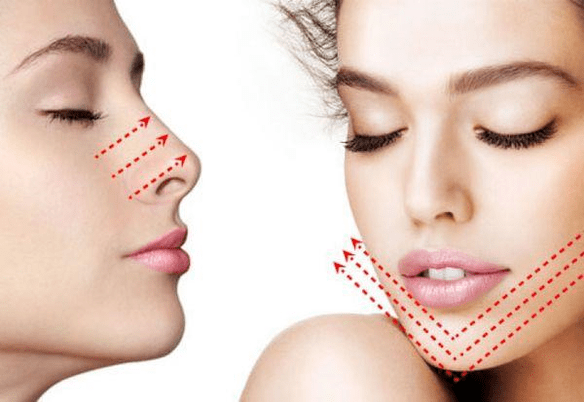
Such a procedure is also used as a temporary measure if a small patient with a severe disability (as a result of a fracture or injury) cannot be operated on.
In men
To get rid of imperfections once and for all, men prefer a radical approach to modeling with fillers. Indications for rhinoplasty in men may be:
- frequent sinusitis, chronic nasal congestion;
- injuries that cause deformation of the nose and septum;
- congenital pathologies and deformities of the bone structure of the body;
- saddle shape, large nostrils, wide bridge of nose, large nose length or thickness;
- respiratory disorders;
- the presence of an ugly hump.
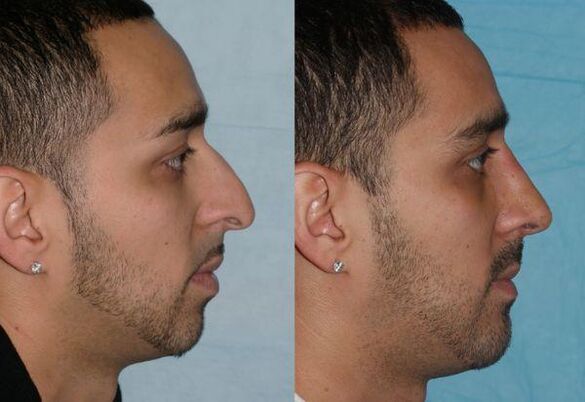
Among women
Women can be interfered in any way. The surgeon decides which one to go to. If small changes are made, the aesthetic problem will be solved without the use of a scalpel. The injection method is often used on the eve of surgery so that a woman can assess what her nose will look like in the future.
What can be corrected using this procedure
Hump adjustment
Reduction is achieved by injecting filler into the curved part. The gel is injected along the entire length of the nasal dorsum to straighten the nodule. Often, drugs absorbed with hyaluronic acid are used to correct the nose.
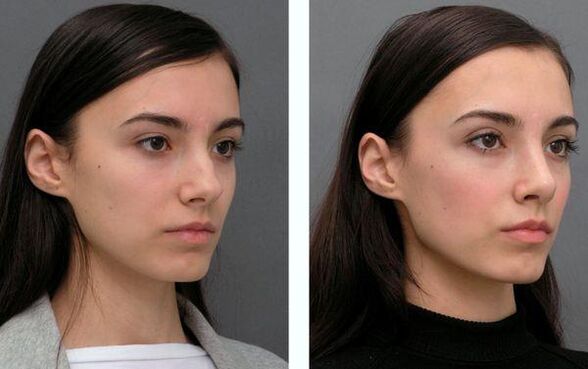
Tip correction
It is carried out by applying fillers to problem areas. This type of rhinoplasty is required, especially if there are small holes or deposits in the tip of the nose. The potato nose is straightened by placing a filling at the very end, which makes it sharper.
The tip can be lifted by applying gel to the nasal columella area. Visually, it hides the hook tip. In some cases, it is necessary to inject into the nostrils to slightly narrow the nostrils.
Correction of a broken nose
If the nose is injured more than once, the contour will not help. In this case, surgery is performed only on the nasal septum. And most likely a full-fledged reconstructive and aesthetic operation. Reconstruction of both the septum and the external osteochondral skeleton may be required.
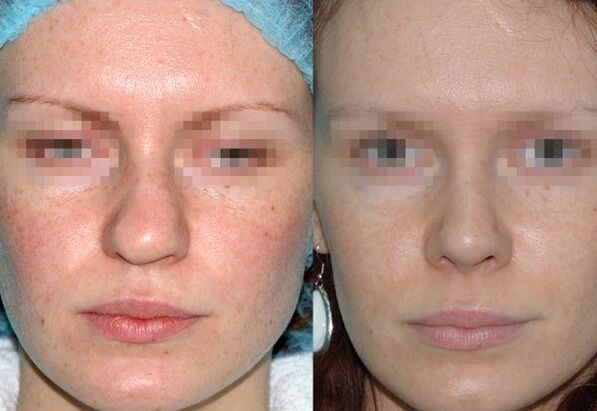
Rear alignment
It is impossible to align the crooked nose bridge without surgery. Injection rhinoplasty only allows you to mask the defect. For example, nasal alignment (low bridge and high bridge) is done by injecting fillers into the entire surface of the bridge of the nose.
Reducing the wings
Hyaluronic acid gel is used to correct the asymmetry of the nasal wings. In this case, the specialist must accurately calculate the dose.
The nose becomes thinner and more expressive after rhinoplasty with hormones.
If it is necessary to eliminate or reduce the asymmetry of the nostrils, fillers are injected into the lower part of the nasal wings.
How old is the operation?
There must be clear reasons for the operation on the face. An honest plastic surgeon will not undertake the correction of a minor's nose if a certain whim of a girl or boy plays a major role.

Persons over 18 years of age are allowed in the operation. In extremely rare cases, this condition can be disrupted. The minimum age for rhinoplasty for girls is 13-14 years, for boys 15-16 years.
For medical reasons, a young person can undergo almost any plastic surgery. However, doctors recommend that you wait until the age when the operated organ is at least 80-90% formed.
How are you preparing for non-surgery?
Unlike classical surgery, it is easier to prepare for a non-surgical procedure. Your doctor may recommend that you see a dermatologist, who will tell you what tests are being done to determine contraindications and limitations.
Adherence to the following guidelines will help reduce the risk of complications:
- You should not drink alcohol for 10 days before plastic surgery;
- salicylates increase bleeding, ie you should not take "Aspirin" and other similar drugs a week before the procedure;
- refrain from eating at least 10 hours before;
- a few days before injection plastics, it is recommended to exclude high physical activity;
- You need to wash your hair the day before, as it is not possible to bend and wet your face after the procedure.
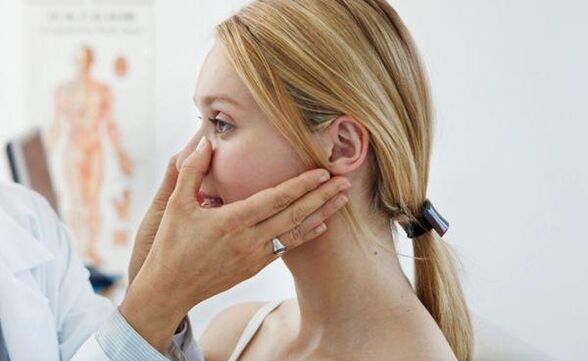
The doctor prescribes antihistamines. With a high temperature, menstruation, respiratory diseases, the procedure should be abandoned until recovery.
I need anesthesia
General anesthesia is not required for non-surgical rhinoplasty. Local anesthesia or infiltration anesthesia is used for anesthesia.
Implementation of technology
Non-surgical plastic surgery is performed in an outpatient setting, patients do not need to be hospitalized. After the procedure, the plastic surgeon's clients go home.
A thorough examination of the future shape of the nose and computer modeling were performed in advance. The average duration of manipulations is 35-60 minutes. The operation proceeds step by step as follows:
- The patient is conscious, only local anesthesia is used. The doctor applies a lidocaine-based cream to and around the nose. The duration of staying under the film is 10-15 minutes.
- After opening the ampoule with the drug and filling the gel into the microcanal, slowly and carefully inject the filler into the designated areas of the nose. If the client has a desire, he can observe the process with the help of a mirror, which he can hold.
- If necessary, the cosmetologist can re-inoculate the filler.
- The last step is a light manual massage. Needed for better distribution of filler.
The result can be evaluated immediately. Fillers are safe and completely absorbed within 1, 5 years.
Outcomes and contraindications of non-surgical rhinoplasty
Women should not be adjusted during pregnancy or menstruation. Non-surgical correction is contraindicated for people suffering from the following diseases:
- acute infectious diseases;
- keloidosis;
- autoimmune pathologies;
- endocrine system pathologies, including diabetes mellitus;
- hemophilia and other blood clotting problems;
- allergies and individual intolerance to the components of the drugs used;
- oncological diseases, tumors of any localization.
What complications can occur
Postoperative complications occur in 10% of cases. It can also occur during surgery (bleeding, tearing of the skin, rupture of the mucosal cartilage wing, violation of the integrity of the bone pyramid, fracture of the bone).
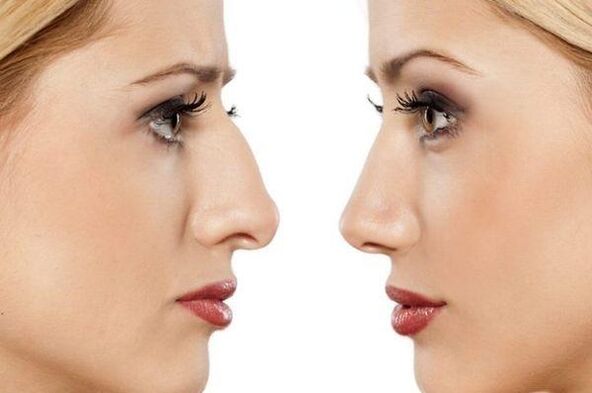
If several cosmetic defects are removed during the operation, a number of complications can develop:
- nosebleeds;
- postoperative pigmentation;
- bone callus;
- soft tissue swelling and hematoma;
- odor loss;
- appearance of keloid scars;
- difficulty breathing;
- curvature of the nasal septum.
Rhinoplasty without surgery is not so dangerous, although it is also a difficult procedure in cosmetic surgery. After that, a special wrinkle is applied to the patient's nose, which corrects the result and protects it from damage.
A few hours after the procedure, there may be redness and swelling of the skin in the nasal area. These problems disappear completely within 24 hours. After squeezing with the ropes, bruises can form, which completely disappear within a week.
Rare complications include processes that may occur due to the inexperience of the surgeon performing the procedure or the patient's failure to follow postoperative rules: displacement of the fillings and rupture of the ropes placed under the skin. The doctor must deal with the problem and urgently.
Nose care after surgery
Laser, hyaluronic acid injections and rhinoplasty with fillers minimize rehabilitation time. You can go home immediately after the nose shaping procedure. Swelling decreases within 1-2 days.
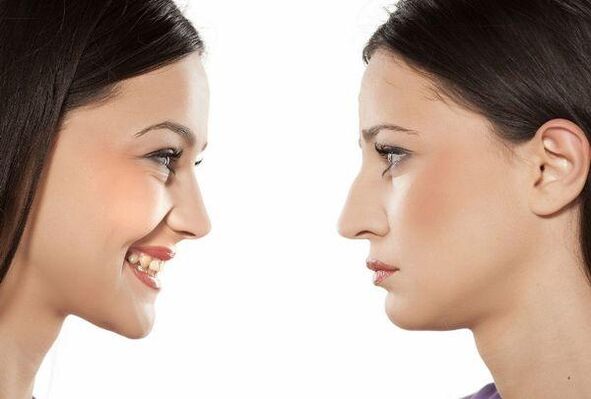
On average, rehabilitation lasts up to several days (depending on the method of correction). There are almost no restrictions after the manipulation. You can continue to go to work, play sports and lead a normal life.
In the postoperative period, you need to watch the facial expressions: grimace, grimacing can not do. You should not strain your muscles for a few hours, blow your nose, sneeze or cough. You should not wear glasses for the first 2-3 days of recovery.
There are strict restrictions on visiting swimming pools (pools, swimming pools, baths, saunas). You also need to give up sunbathing, smoking, foundation.
You can not massage at the injection site or do physiotherapy for 2 weeks.
How long does edema last after surgery?
The entire rehabilitation period after surgery can take about a year. In the first days, the patient should wear a bandage, dressing or plaster. The swelling on the face will decrease in 1-2 days. After 21 days, the cast is removed and blood clots are removed from the nose and tampons.
Active recovery occurs in the next 3 months, the traces of side effects are reduced, but small changes may occur by the end of the year.
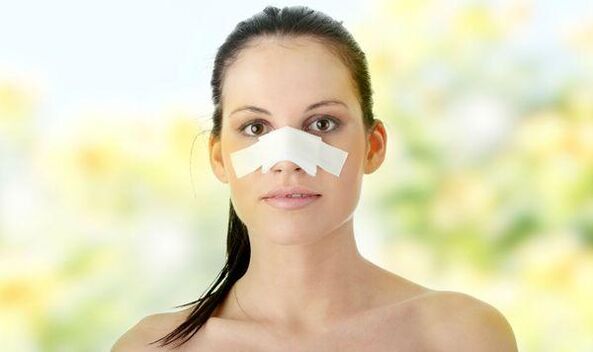
What to do if the operation fails
The result of the operation can be evaluated only after 6 months. Experience shows that 20% of all interventions to correct or eliminate nasal defects are not alone.
After this period, if the nose does not take the desired shape or remains swollen, the operation may be considered a failure. In such cases, repetitive operations are determined.
When to repeat the procedure
The effects of non-surgical nose surgery last an average of about a year. You can repeat the procedure at any time.
Repeated (secondary) rhinoplasty after surgery can be prescribed no later than one year. Technically, this is a more complicated procedure. It is prescribed if the patient is not satisfied with the result or if the previous operation failed (did not give the expected effect).
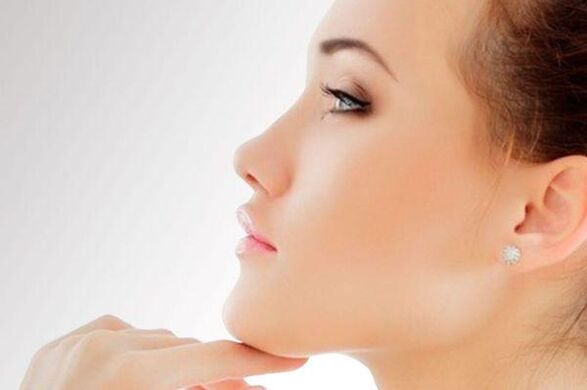
Benefits of Non-Surgical Rhinoplasty
The filling and sewing procedure cannot be considered a full-fledged alternative to surgery, but it has a number of obvious advantages. The main ones:
- painlessness;
- short rehabilitation period (sometimes absent);
- fast results;
- reversibility (you can always return to the previous form if the result is not satisfactory).
The procedure has both advantages and disadvantages. It has a very low effect on the general condition of the body, does not damage facial tissues, and then does not form wounds and scars. However, if injected incorrectly, gel lumps can form under the skin. Their displacement will cause a change in the shape of the nose.
After minimally invasive intervention, there are no stitches, the skin heals better. However, infection and risk of infection still remain.
The low price procedure is offered to anyone who wants to improve their appearance. However, the possible complications force the choice of clinic to be extremely careful.Often, unsuccessful cosmetic interventions occur after visiting non-specialized salons and doctors who do not have the appropriate features.The final decision should be made only after studying the previous work of the master and the assessments of the clinic.




















